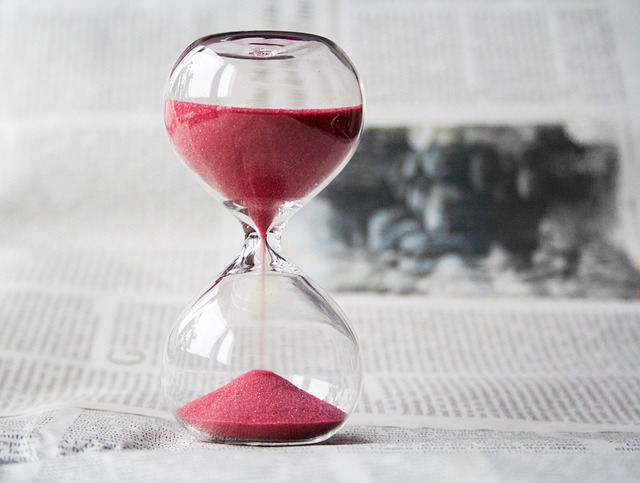I. Prioritizing Tasks: The Key to Productivity
Hey there! Are you feeling overwhelmed with your never-ending to-do list? Do you find yourself constantly busy, but struggling to accomplish anything significant? Well, don’t fret! In this article, we’ll explore the art of prioritizing tasks and how it can skyrocket your productivity.
Let’s face it, trying to tackle all your tasks at once is a recipe for disaster. It’s time to take a step back and evaluate what truly matters. Prioritization is all about identifying the most important tasks and focusing your energy on those first.
So, where do you start? Begin by creating a comprehensive list of all the tasks you need to complete. This could be done digitally or with pen and paper, whichever method suits you best. Once you have your list, it’s time to categorize.
1. Urgent vs. Important
A common mistake many of us make is assuming that urgent tasks are the most important. However, that’s not always the case. Urgent tasks are those with impending deadlines, while important tasks are those that align with your long-term goals or have a significant impact on your overall success.
By understanding the difference between urgent and important tasks, you can prioritize effectively. Start by identifying the tasks that are both urgent and important. These should be your top priority. Next, look for tasks that are important but not necessarily urgent – these can be scheduled for later. Finally, consider tasks that are urgent but not important, as they may be delegated or even eliminated if possible.
2. Using the Eisenhower Matrix
If you’re looking for a visual aid to help with prioritization, the Eisenhower Matrix is an excellent tool. It divides tasks into four quadrants: urgent and important, important but not urgent, urgent but not important, and neither urgent nor important.
By classifying your tasks into these quadrants, you can determine which ones require immediate attention and which ones can be put on the backburner. This method ensures that you’re not only focusing on urgent tasks but also dedicating time to important ones that contribute to your long-term success.
Remember, prioritizing tasks isn’t about being busy all the time; it’s about being productive. By identifying what truly matters and tackling those tasks first, you’ll find yourself accomplishing more with less stress.
So, take a deep breath and start prioritizing your tasks. You’ll be amazed at how this simple technique can revolutionize your productivity and bring you one step closer to achieving your goals.
Time Blocking: Organize Your Day for Maximum Efficiency

Welcome to the world of time blocking! If you’ve ever found yourself overwhelmed by the multitude of tasks you need to accomplish each day, this technique will be a game-changer for you. Time blocking is a powerful strategy that helps you organize your day, allocate time to specific activities, and ultimately boost your productivity.
So, how does time blocking work? It’s simple. Instead of haphazardly jumping from one task to another, you set aside dedicated blocks of time for specific activities. By doing so, you create a structured schedule that allows you to focus on one task at a time without distractions. Here are a few key steps to get started:
- Identify your priorities: Start by listing all the tasks you need to complete. Then, determine which ones are the most important and require your immediate attention. These tasks become your top priorities.
- Break tasks into manageable chunks: Large tasks can be daunting, leading to procrastination. To tackle them efficiently, break them down into smaller, more manageable chunks. This approach makes it easier to allocate time for each part and track progress along the way.
- Allocate time blocks: Now that you have your priorities and manageable chunks, allocate specific time blocks for each task. Be realistic and give yourself enough time to complete each task without feeling rushed. Remember to consider your energy levels throughout the day and assign tasks accordingly.
- Stick to the schedule: Once you’ve set your time blocks, respect them as if they were appointments with yourself. Treat them as non-negotiable commitments and avoid letting other distractions interfere. Practice discipline and stay focused during each allocated time period.
Time blocking has numerous benefits. By following this technique, you regain control over your day and avoid feeling overwhelmed by your to-do list. It also helps you prioritize tasks effectively, ensuring that the most important ones are given the attention they deserve.
Now that you’re armed with the knowledge of time blocking, why not give it a try? Start small, experiment, and adjust your schedule as needed. With practice, you’ll find yourself becoming more organized, productive, and in control of your day. Remember, consistency is key, so stick to your time blocks and enjoy the rewarding results!
Minimizing Distractions: Creating a Focused Work Environment

Welcome back to our series on boosting productivity! In this article, we’ll delve into the importance of creating a focused work environment and how to minimize distractions. We all know how easily we can get sidetracked by emails, social media, and other interruptions, so let’s explore some strategies to help us stay laser-focused on our tasks.
1. Designate a dedicated workspace:
Having a designated workspace can do wonders for your productivity. It creates a psychological boundary between your work and personal life, allowing you to mentally switch gears and focus solely on your tasks. Whether it’s a separate room, a corner in your living room, or even just a desk in your bedroom, find a space that you can associate with work and make it your own.
2. Eliminate visual distractions:
A cluttered workspace can be a major source of distraction. Take a few minutes to tidy up your area and remove any unnecessary items. Keep only the essentials within reach, such as your computer, notepad, and pens. Not only will a clean and organized workspace help you concentrate, but it will also make you feel more motivated and in control.
3. Manage noise levels:
Noise can disrupt your concentration and hinder your ability to focus. If you’re working from home or in a noisy environment, consider using noise-canceling headphones or playing soft background music to drown out the distractions. Experiment with different types of music to find what works best for you. Some people find classical music or ambient sounds to be particularly helpful in creating a calm and focused atmosphere.
4. Set boundaries with others:
If you live with family or roommates, it’s crucial to communicate your need for uninterrupted work time. Let them know your working hours and ask for their cooperation in minimizing distractions. Consider using visual cues, such as a “do not disturb” sign, to indicate when you need focused time. By setting clear boundaries, you’ll be able to work without constant interruptions, allowing you to maintain your productivity.
5. Use website and app blockers:
We all know how tempting it can be to check social media or browse the internet during work hours. To combat this urge, consider using website and app blockers. These tools can temporarily block access to distracting websites or apps, helping you stay on track. There are several free and paid options available, so find one that suits your needs and start reclaiming your focus.
6. Take regular breaks:
While it may seem counterintuitive, taking regular breaks can actually improve your productivity. Schedule short breaks throughout your workday to give your mind a chance to rest and recharge. Use this time to stretch, grab a snack, or take a walk. By stepping away from your work for a few minutes, you’ll return with a renewed sense of focus and energy.
Now that you’re armed with these strategies, it’s time to create your own distraction-free workspace and boost your productivity. Remember, it’s all about finding what works best for you. Experiment with different techniques and tweak them until you discover the perfect formula for your optimal focus. Good luck!
Implementing Effective Breaks: Recharge and Refocus for Optimal Productivity
When it comes to productivity, many people think that working non-stop is the way to go. However, research has shown that taking regular breaks throughout the day can actually boost productivity and improve focus. It may seem counterintuitive, but allowing yourself time to recharge can make a world of difference in your work performance.
So, how can you implement effective breaks into your workday? Here are some strategies to help you recharge and refocus for optimal productivity:
1. Schedule Regular Short Breaks
Instead of pushing yourself to work for hours on end, try breaking up your day into smaller chunks of focused work with short breaks in between. Studies have shown that taking short breaks every 90 minutes can help maintain high levels of productivity.
During these breaks, step away from your desk and engage in activities that relax and recharge you. Whether it’s stretching, going for a short walk, or simply closing your eyes and taking a few deep breaths, find what works best for you.
2. Incorporate Longer Breaks for Physical Activity
In addition to regular short breaks, it’s important to include longer breaks in your schedule for physical activity. Exercise has been proven to improve cognitive function, memory, and overall well-being.
Consider taking a longer break in the middle of your workday to engage in some form of physical activity. Whether it’s going for a run, hitting the gym, or even doing a quick workout at home, getting your body moving can do wonders for your productivity.
3. Disconnect from Technology
In our hyper-connected world, it’s easy to get caught up in the constant notifications and distractions from our devices. To truly recharge and refocus during your breaks, it’s important to disconnect from technology.
Put your phone on silent or leave it in another room. Resist the urge to check social media or respond to emails. Instead, use this time to engage in activities that promote relaxation and mindfulness. Whether it’s reading a book, practicing meditation, or even just enjoying a cup of tea, disconnecting from technology allows your mind to rest and rejuvenate.
4. Embrace Microbreaks
In addition to longer breaks, incorporating microbreaks throughout your workday can also be beneficial. These are short, 5-minute breaks that allow you to briefly step away from your work and shift your focus.
During these microbreaks, try doing a quick stretch, closing your eyes and taking a few deep breaths, or even just looking out the window and enjoying the view. These small pauses can help prevent mental fatigue and keep you feeling refreshed throughout the day.
Remember, taking breaks is not a sign of laziness or lack of productivity. In fact, it’s a strategic approach to optimizing your work performance. By implementing these strategies and allowing yourself time to recharge and refocus, you’ll find yourself more energized, focused, and productive throughout the day.
So, the next time you feel overwhelmed or stuck in a productivity slump, take a break. Your mind and body will thank you, and your productivity will soar.







